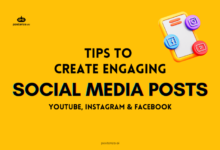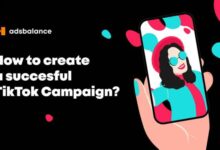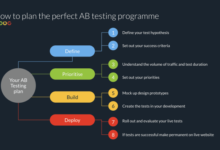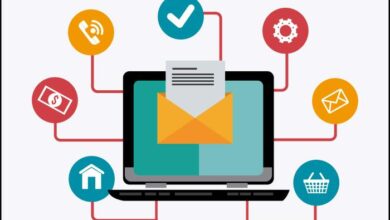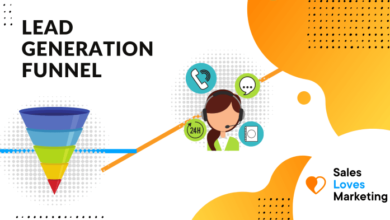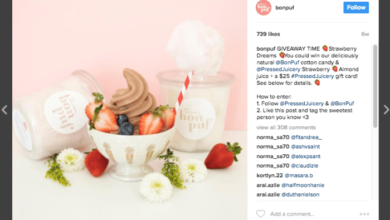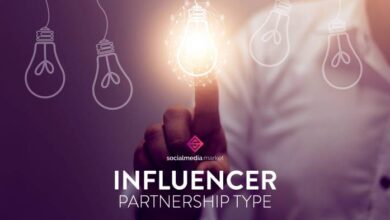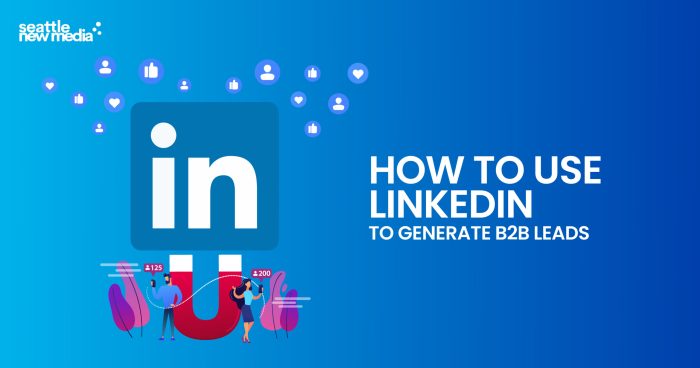
Utilizing LinkedIn for B2B marketing opens up a world of opportunities for businesses seeking to expand their reach and connect with other professionals in the industry. From creating compelling Company Pages to leveraging LinkedIn Groups and Ads, this platform offers unique advantages that set it apart from other social media platforms. Let’s dive deeper into how you can harness the power of LinkedIn for your B2B marketing strategies.
Importance of LinkedIn for B2B marketing
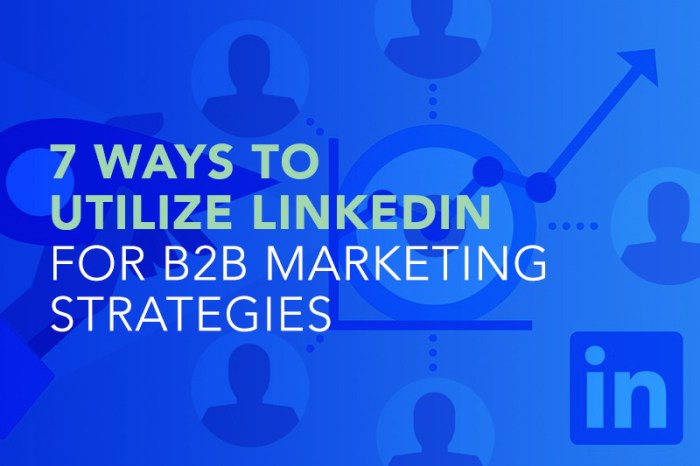
LinkedIn has become a crucial platform for B2B marketing due to its unique features and capabilities that cater specifically to businesses looking to connect and engage with other businesses. Unlike other social media platforms, LinkedIn is focused on professional networking, making it an ideal space for companies to showcase their products and services to a targeted B2B audience.
Key Features of LinkedIn for B2B Marketing
- Professional Networking: LinkedIn is designed for professionals to connect, making it easier for businesses to reach decision-makers and key stakeholders in other companies.
- Targeted Advertising: With LinkedIn’s advanced targeting options, businesses can tailor their ads to reach specific industries, job titles, or company sizes, ensuring their message reaches the right audience.
- Content Marketing Opportunities: LinkedIn offers various content formats like articles, videos, and slideshows, allowing businesses to showcase their expertise and thought leadership in their industry.
- Lead Generation Tools: LinkedIn provides tools like Lead Gen Forms and InMail campaigns that help businesses capture leads and nurture relationships with potential clients.
Differentiation of LinkedIn in B2B Marketing
- Professional Environment: LinkedIn is a platform where professionals go to network and seek business opportunities, creating a more conducive environment for B2B marketing compared to other social media platforms focused on personal connections.
- Business-Focused Content: LinkedIn users are more receptive to business-related content, making it easier for businesses to engage with their target audience and share valuable information about their products or services.
- Networking Capabilities: LinkedIn’s networking features like Groups and Company Pages allow businesses to build relationships with other companies, collaborate on projects, and establish credibility within their industry.
Creating a compelling LinkedIn Company Page: Utilizing LinkedIn For B2B Marketing

Creating a professional LinkedIn Company Page is crucial for B2B marketing success. It serves as a digital representation of your brand and allows you to showcase your products, services, and company culture to potential clients. Here are the steps to set up a professional LinkedIn Company Page:
Setting Up Your LinkedIn Company Page
- Create a LinkedIn account or log in to your existing one.
- Click on the “Work” icon in the top right corner and select “Create a Company Page”.
- Choose the type of page you want to create (small business, medium to large business, showcase page, etc.).
- Fill in your company details, including name, description, logo, and cover image.
- Add a call-to-action button to direct visitors to your desired action (e.g., contact us, visit website).
- Optimize your page with relevant s for search engine optimization.
- Start sharing engaging content to attract followers and drive engagement.
Elements of a Compelling LinkedIn Company Page
- Company Overview: Provide a concise yet informative description of your company, highlighting key products or services.
- Logo and Cover Image: Use high-quality visuals that represent your brand effectively.
- Showcase Page: Create showcase pages for specific products or services to target different audiences.
- Employee Profiles: Encourage employees to link their profiles to the company page to increase credibility.
- Content Strategy: Share industry insights, thought leadership articles, and updates to engage your audience.
- Recommendations and Endorsements: Encourage clients and partners to leave recommendations to build trust.
Key Strategies for Successful LinkedIn Company Pages
- Consistent Branding: Maintain a consistent brand image across all elements of your company page.
- Engaging Content: Share relevant and valuable content to keep your audience interested and informed.
- Regular Updates: Post regularly to stay top of mind with your followers and showcase your expertise.
- Engagement with Followers: Respond to comments, messages, and interactions promptly to build relationships.
- Analyze Performance: Use LinkedIn analytics to track the performance of your page and optimize your strategy.
Leveraging LinkedIn Groups for B2B marketing
LinkedIn Groups can be a powerful tool for B2B marketers looking to connect with their target audience in a more focused and engaging way. By joining and participating in relevant LinkedIn Groups, businesses can benefit in various ways, from establishing thought leadership to generating leads and fostering relationships with potential clients.
Benefits of joining and participating in LinkedIn Groups
- Access to a targeted audience: LinkedIn Groups allow businesses to connect with a specific demographic or industry niche, ensuring that their marketing efforts reach the right people.
- Opportunity for networking: Joining LinkedIn Groups provides a platform for businesses to engage with industry peers, share insights, and build valuable connections that can lead to potential partnerships or collaborations.
- Establishing thought leadership: By actively participating in discussions within LinkedIn Groups, businesses can showcase their expertise, establish credibility, and position themselves as industry leaders in the eyes of potential clients.
Tips on identifying and engaging with relevant LinkedIn Groups
- Conduct thorough research: Identify LinkedIn Groups that align with your target audience, industry, or niche by using relevant s in the search bar and evaluating the group’s activity and engagement levels.
- Join and observe: Once you have found relevant LinkedIn Groups, join them and spend some time observing the discussions, topics, and interactions to get a sense of the group dynamics and etiquette before actively participating.
- Engage authentically: When engaging in LinkedIn Groups, focus on adding value to conversations, sharing valuable insights or resources, and avoiding overly promotional content to build credibility and trust within the group.
Best practices for promoting products/services within LinkedIn Groups
- Provide value first: Before promoting products or services, focus on establishing relationships, sharing valuable content, and engaging with group members to build trust and credibility.
- Share relevant content: When promoting products or services within LinkedIn Groups, ensure that the content is tailored to the group’s interests, challenges, and needs to resonate with members and generate genuine interest.
- Encourage discussions: Instead of just sharing links or product information, initiate discussions, ask questions, or seek feedback from group members to spark conversations and create engagement around your offerings.
Utilizing LinkedIn Ads for B2B marketing
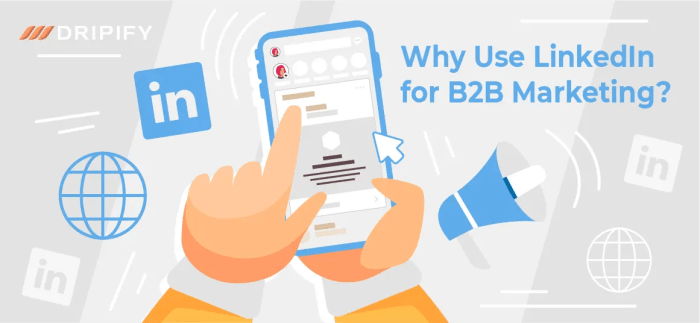
LinkedIn Ads provide a powerful platform for B2B marketers to reach their target audience effectively. The platform offers various types of ads that can be tailored to meet specific marketing objectives, whether it’s brand awareness, lead generation, or driving website traffic.
Types of LinkedIn Ads for B2B marketing
- Sponsored Content: These are native ads that appear in the LinkedIn feed and allow you to promote your company’s updates, blog posts, or other content.
- Text Ads: These are small, text-based ads that appear on the side or top of the LinkedIn feed. They are effective for driving traffic to your website or generating leads.
- Sponsored InMail: This type of ad allows you to send personalized messages directly to your target audience’s LinkedIn inbox. It’s great for promoting events, webinars, or product launches.
- Dynamic Ads: These ads are personalized for each viewer based on their LinkedIn profile information. They are great for increasing engagement and driving conversions.
Setting up a LinkedIn Ad campaign for B2B marketing
- Define your campaign objective: Whether it’s brand awareness, lead generation, website visits, or engagement, clearly define your goal.
- Target your audience: Use LinkedIn’s robust targeting options to reach the right professionals based on criteria like job title, industry, company size, and more.
- Create compelling ad creative: Craft engaging ad copy and visuals that resonate with your target audience and align with your campaign objective.
- Set your budget and bidding strategy: Determine how much you want to spend and choose between cost-per-click (CPC) or cost-per-impression (CPM) bidding.
- Measure and optimize: Monitor the performance of your ads, track key metrics like click-through rate (CTR) and conversion rate, and make adjustments to optimize your campaign for better results.
Effectiveness of LinkedIn Ads vs. other digital advertising platforms for B2B marketing, Utilizing LinkedIn for B2B marketing
LinkedIn Ads are particularly effective for B2B marketing due to the platform’s focus on professional networking and targeting capabilities. Compared to other digital advertising platforms, LinkedIn allows you to reach a highly specific B2B audience based on job function, industry, seniority, and company size. This precision targeting can lead to higher-quality leads and better ROI for B2B marketers. Additionally, LinkedIn’s native ad formats and personalized messaging options make it easier to engage with decision-makers and influencers in the B2B space.
Last Point

In conclusion, Utilizing LinkedIn for B2B marketing is a game-changer for businesses looking to elevate their marketing efforts. By following the best practices Artikeld in this discussion, you can effectively leverage LinkedIn’s features to reach your target audience and drive business growth. Stay ahead of the curve by incorporating LinkedIn into your B2B marketing arsenal today.
Server-side scripts are programs that run on a web server, allowing dynamic content to be generated before it is sent to the user’s browser. To learn more about what server-side scripts are and how they work, you can visit this informative article on What is a server-side script.
Email automation is a powerful tool for personalized marketing campaigns. By automating emails based on user behavior and preferences, businesses can increase engagement and conversions. For further insights on utilizing email automation for personalized marketing, you can refer to this detailed guide at Utilizing email automation for personalized marketing.
Creating a successful digital marketing plan is crucial for any business looking to thrive online. From defining goals to choosing the right channels, a well-thought-out strategy can drive results. To explore more about creating a successful digital marketing plan, you can read this comprehensive article at Creating a successful digital marketing plan.
